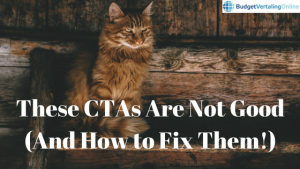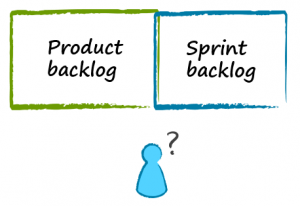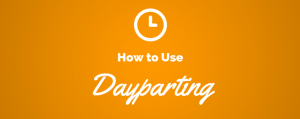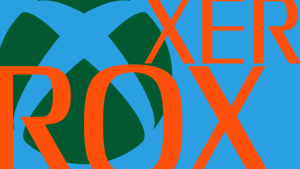This column is still about career advice but personal finance is a career issue. As a recruiter, I have rescinded job offers because of adverse credit checks. As a career coach, I have seen even my most senior, experienced professionals trapped in jobs they can’t stand because they don’t have the savings to move to a lower-paying but preferred career or start a business or take extended time off. Money gives you options, and options give you leverage in your career.
So I was very excited to read Wild Money, a new personal finance book by Luna Jafffe, a certified financial planner and visual artist. Jaffe was an artist and psychotherapist for 20+ years before coming into financial planning in her early 40’s. Two career lessons to note:
- Jaffe is a real-life example of a radical mid-career change (from artist/ psychotherapist to financial planner). Furthermore, she had a young child when she made the transition. Lesson: career change can be done at a later life stage, alongside other commitments!
- Jaffe’s assistant sent me the book which is how I heard about it. (So yes, I received the book for free but no other compensation to feature it. I don’t write about books or other products, unless it serves this column.) Lesson: You don’t just write the book (or the resume or the business plan). You need to put it out there and ideally in front of people predisposed to be interested and helpful (I was targeted because I often write about books and I have a creative background.) Target TGT +0.98% your career leads!
I contacted Jaffe for more information on Wild Money since it’s an interesting alternative for people who want to improve their personal finance skills but may be intimidated or just plain bored by the traditional money advice books:

Finance (Photo credit: Tax Credits)
Your book is not your typical finance text. The look and feel of it are beautiful and visual with artistic renderings, not investment charts. As an analytical person, I found it very refreshing. Why did you decide to incorporate the creative with the financial? How did this idea come about?
— The truth of the matter is that I couldn’t create a book devoid of color and image because I’m a financial planner who is deeply creative. I was a professional artist for over 10 years, and then returned to graduate school for a degree in Depth Psychology. I wrote my Masters thesis on Jungian Sandplay Therapy and explored ways of using imagery and visual play to evoke profound change. When I was recruited into financial services (all the while thinking they must have made a mistake in hiring me), I was the only colorfully dressed woman in a sea of white men in suits. Definitely not my tribe, yet because of my unconventional approach to financial planning, I built a $48M business in 6 years. Women were hungry for a financial person who spoke in metaphor and story, rather than boring charts and spreadsheets. These books are the result of working with clients for seven years, wishing all along that I had a road map for them to work through.
Your book has powerful cautionary tales of bad money habits. What are some success stories, turnaround situations you have seen regarding people and their money?
— The process I share in my book is grounded in creating visual images of different aspects of your relationship with money. You don’t have to be an artist, in fact you can do this process entirely through using images pulled off of Google GOOG -0.3%. What’s powerful is first realizing that you have a money story that is hungry to be told. The other day I had a client who created her initial drawing (responding to the prompt: Create an image of where you are in your relationship with money, right now?)— at first she thought it was a tomato, but on closer inspection, she realized that it was her Grandmother’s pin cushion. I asked her to tell me more and she said this: “I really can’t believe this, but I am the pin cushion and all those pins are my money pains… I’m surprised by this image, yet I know it’s true— I feel wounded around money, and afraid the medical expenses for my child and husband will never end. It’s terrifying, if I’m really honest with myself.” Once we talked it through I asked her to change one thing in the image. After playing with a few ideas, she suddenly smiled and said, “Why I think I’ll just take those pins out of the pin cushion…. Oh, now that’s much, much better.” What’s stunning about this, is that in the weeks that followed, this client felt her financial picture shift along with her attitude. She often refers to the pin cushion as a way of articulating how she’s feeling, and as a barometer of her awareness.
Lots of people, women in particular, are stretched too thin already with career and family commitments. Personal finances become a someday item on the TO DO list. For the busy professional who wants to jump in now and just get started, what are 3 small steps they can take now?
Three small steps a busy woman can take right now:
- Become a determined learner, and ask questions anytime you don’t understand a financial term or concept. Smart women aren’t afraid to ask questions.
- Take five minutes a day to pay attention to your money: log on to your bank or brokerage company, and note the balances and activity, or simply write in a journal about how you are feeling about money. Either way— checking your accounts or writing, you will develop awareness. Awareness is power.
- Find a money mentor and meet regularly. This might be a friend who is financially savvy, or a money coach. Find someone who is compassionate yet will hold you accountable, and commit to taking little steps forward between each meeting.
A lot of people dream of writing a book. You managed to do it with a full-time career and family to juggle. Did you take time off to write it? Did you carve out nights and weekends? What was your time management strategy to get this done? What would you recommend for someone with dreams of a big side project like a book?
I love this question! I wrote in the wee hours of the morning before anyone in my home stirred. I honored my dream to write a book but realized I had no idea how to approach it. I hired a book writing coach/editor and leaned into his guidance. It was one of the most rewarding experiences of my life. He honored my vision, and called things out of me I didn’t know were there. We discussed whether to seek an agent and publisher or go down the self-publishing path. In the end it was his questions that enabled me to land on what mattered most, and what outcome I wanted to achieve. I knew that I had a vision for the book’s design and wanted to do the art direction and I loved Jeffrey’s editing and was afraid that if I sold the book and had to work with a different editor I might lose my energy for the project. So I self-published, and did a Kickstarter campaign to raise funds and awareness.
My advice to someone with a big dream is this: be fearless, find focus, ask for help, and bring it on! The world needs you to make your dreams reality.
Caroline Ceniza-Levine is co-founder of SixFigureStart® career coaching. She has worked with executives from American Express AXP +0.24%, Citigroup C -0.08%, Condé Nast, Gilt, Goldman Sachs, McKinsey, and other leading firms. She’s also a stand-up comic, so she’s not your typical coach. Connect with Caroline on Google+.
Read more on Forbes
(418)






